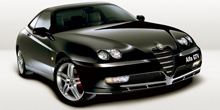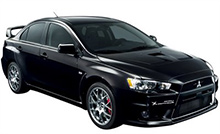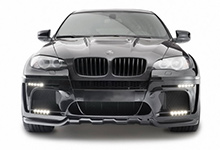 Today, this emblem on the grille or on the hood of a beautiful car is known to the whole world. This car has become a symbol of a reliable, powerful and comfortable car, and its owner personifies an example of "success" in life. If you became the owner of Audi, then consider what you did taxi ordering in the circle of the elect.
Today, this emblem on the grille or on the hood of a beautiful car is known to the whole world. This car has become a symbol of a reliable, powerful and comfortable car, and its owner personifies an example of "success" in life. If you became the owner of Audi, then consider what you did taxi ordering in the circle of the elect.
This emblem appeared only in 1934 at the merger of 4 companies - “Audi Werke”, “August Horch Automobile Werke”, DKV and “Wanderer” into the Auto Union automobile concern. At first, the Audi logo was used only on race cars, while every company produced ordinary cars under its own brand and decorated it with its own emblems.
However, the Audi brand itself appeared much earlier. She was born in 1910 by a court decision. Then the case against August Horch, who was accused of misappropriation of the brand, was heard. The fact is that August Horch was a talented designer and entrepreneur, the cars of his firm “A. Horch & Co ”under the brand“ Horch ”enjoyed good demand. But, having quarreled once again with shareholders, he left the company and after a while created a new company, August Horch Automobilwerke GmbH. Both the first and second companies founded by him bore the name "Horch". Naturally, the hosts first filed a lawsuit and won the case. It was necessary to have a different company name. By a court decision, the second was given the new name Audi, which in Latin is the same as Horch in German - “listen, listen”.
Since its birth, Audi has participated in various competitions. This perseverance was rewarded in 1911, when his Audi B model with a 2.6-liter engine in Austria at the Alp Cup competitions passed the entire race distance without penalty points. Taking into account all the shortcomings of the car series "B" in 1913, was developed by the Audi "C", with a 4-cylinder 3.5-liter engine. The wooden body of the car was open and had an elongated and pointed rear part, which provided the car with better aerodynamics and gave a predatory appearance. As a result, in the years 1912-1914, this Audi model performed well on the Alps Cup, for which it received the nickname “The Conqueror of the Alps”.
In the 1920s, a few more cars appear: the 50-strong Audi-K, the first car with a 6-cylinder engine, the Audi-M, the first 8-cylinder engine in an R-series car that received a loud and formidable name imperator. It becomes the latest Audi's own design, which was soon taken over by another carmaker, DKW. In 1932, four German companies DKW, Audi, Horch and Wanderer form a single concern Auto Union. The result of their merger is the idea of a front-wheel drive for mass cars. Gradually, all the problems and difficulties in mastering the new design were overcome, the new car showed itself well and was produced until 1938.
After the second World War II, the city of Zwickau, where Audi was released, became part of the GDR. Audi Automobile Plant becomes the property of the state and it opens the release of Trabants. Audi cars are no longer produced, since after the war, the Auto Union concern only chooses DKW cars. In 1958, the Auto Union company passed under the control of Daimler Benz, and in 1964 became the property of the Volkswagen concern. In 1965, the Audi brand was reborn. In 1969, Auto Union and NSU were merged - the new car company is called NSU Auto Union. In 1984, the company was renamed simply Audi.
After 1965, the Audi family of models began to expand rapidly - by the beginning of the 70s, the 60, 75, 80 and 100 series of cars appeared. Created in 1980, all-wheel drive Audi quattro modifications repeatedly achieve success at international rally and this brings high prestige to Audi cars.
Getting to the masses of all-wheel drive Audi cars is considered a revolutionary stage in the development of the automotive industry. Audi's first four-wheel drive cars are calculated primarily on sporting events, where you can check the reliability of new designs. They put powerful 5-cylinder turbocharged engines. Under the influence of all-wheel drive Audi, a new direction is being laid in the creation of production cars for both sports and normal use.



